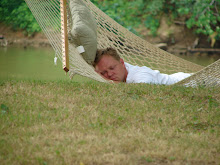Well, the results of my MRI are back, I've seen the doctor...My foot has "a severe bone contusion/non-displaced fracture..." The reason they can't say which it is definitively is because the injury is 8 weeks old and started to heal. The doc said it would have to be immobilized for a month and asked if I wanted a cast or a boot.
I chose the more uncomfortable boot since it can be removed for bathing. This thing SUCKS! It rubs the side of my lower leg and puts pressure on the bone that was broken. The Mrs. and I wrapped my leg with an ACE bandage in the area of the most pressure. It has helped more than the Velcro pads that came with it do. Hopefully this will make the next 4 weeks more bearable.
My family physician called with the results of my head and neck MRI. My brain was 'normal" (insert haha!) and one disc in my neck was slightly protruding. She didn't show allot of concern with that, but, she said the crystals in my ears are misaligned. I am not making this up. It is an actual condition that is called 'benign paroxysmal positional vertigo' BPPV.
Here it is in a nut shell, as found here, http://www.doctorhoffman.com/wwbppv.htmThe medical term for "ear crystal" is otolith (also known as otoconia). Everyone has otoliths. They are found in two inner ear organs, the utricle and the saccule, collectively known as the otolithic organs. These organs are responsible for our ability to sense a gravitational field. In other words, even if you are in a pitch dark room, floating in a swimming pool (thus deprived of visual cues and musculoskeletal cues), you will still know which way is up, thanks to your otolithic organs. The nerve endings in the otolithic organs are embedded in a gelatinous goo known as the otolithic membrane. Embedded in this gelatinous membrane, like grapes in fruit jello, are the otoconia. They are tiny calcium carbonate/calcite crystals. Their whole purpose in life is to make that jello as heavy as possible. That way, when you tilt your head in a gravitational field, the otolithic membrane moves accordingly, thus stimulating the nerve endings underneath. Current dogma states that otoliths may become liberated from the otolithic membranes, and are then free to float through the inner ear fluid. These free agents are capable of stimulating other parts of the inner ear. In particular, with regard to BPPV, they are thought to most commonly stimulate a structure known as the posterior semicircular canal. The semicircular canals are responsible for our sense of rotational motion. If a semicircular canal is stimulated by errant otoliths, the result is a sense of rotational vertigo.
Neat stuff, huh? I actually start a therapy on April 6th to help alleviate the effects. I'll post my progress...

No comments:
Post a Comment